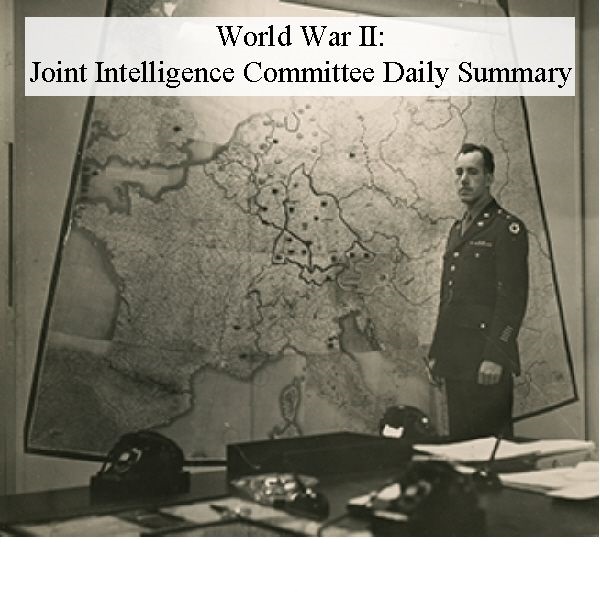
World War II: Joint Intelligence Committee Daily Summary Reports
$19.50
World War II: Joint Intelligence Committee Daily Summary Reports
Description
World War II Joint Intelligence Summaries
Timeline of Main Events Covered in the Sources:
The Joint Intelligence Committee Daily Summary Reports span the period of December 28, 1941 to January 6, 1943. The reports focus on providing intelligence to aid the strategic planning of the prosecution of World War II. Key aspects and implied events during this period include:
- December 28, 1941: The first Joint Intelligence Committee Daily Summary Report was issued. This marks the beginning of a consistent flow of intelligence analysis for top US officials, following the attack on Pearl Harbor and the US entry into World War II.
- February 1942: The Joint Chiefs of Staff (JCS) organization replaced the Joint Army-Navy Board. The Joint Intelligence Committee, which previously supported the Joint Army-Navy Board, continued its function under the new JCS structure. This signifies a formalization and potentially increased importance of joint intelligence gathering and analysis within the US military command structure.
- Throughout December 1941 to January 1943: The JIC produced daily summaries covering a wide range of information, including:
- Axis and Allied Forces: Strengths, weaknesses, and performance across various operational areas.
- Operational Areas/Theaters: The Far East, Pacific, Atlantic, West and East Europe, and the Middle East.
- Geographic Areas: Latin America, North Africa, and Africa.
- Specific Locales: Countries, U.S. and Allied command areas, island groups.
- Enemy Activities: Deployments, force build-ups, losses, and operations, providing insights into their intentions and capabilities.
- Allied Activities: Operations and capabilities.
- Enemy Tactics and Equipment: Detailed information on how the Axis forces were fighting and what they were using.
- Shipping Losses: Statistical data on Allied, neutral, and enemy merchant shipping and losses.
- Force Strengths: Data on the number of personnel and equipment available to both sides.
- Political Information (Limited): Primarily concerning Latin America and US/Allied relations with Vichy France.
- Visual Aids: Charts and maps depicting the progress of the war.
- January 7, 1943: The Joint Intelligence Committee Daily Summary was discontinued. This signifies a shift in the intelligence reporting structure or priorities within the US government at this stage of the war.
- Post-January 7, 1943: While the daily summaries ceased, the Joint Intelligence Committee likely continued to operate and produce other forms of intelligence studies as required by the Joint Chiefs of Staff.
- 1974: Many of these Joint Intelligence Committee Daily Summary Reports were declassified, making them available for public and historical scrutiny.
Cast of Characters:
The provided source primarily describes the function and content of the reports rather than focusing on individual people. However, based on the information, we can identify the principal individuals and groups who were directly involved with or recipients of these reports:
- Franklin D. Roosevelt: The President of the United States during World War II. He was a primary recipient of the Joint Intelligence Committee Daily Summaries, highlighting the importance of this intelligence for his strategic decision-making.
- High Officials: This is a general term referring to key individuals within the US government who were involved in the prosecution of the war. This likely included cabinet members, key advisors, and potentially congressional leaders.
- Leadership of the War Department: The civilian leadership responsible for the United States Army and its air arm (Army Air Corps) before the establishment of the Department of the Air Force. They relied on these summaries for strategic planning.
- Leadership of the Navy Department: The civilian leadership responsible for the United States Navy and Marine Corps. They were also key recipients of these intelligence summaries.
- U.S. Agency Officials Involved in the Prosecution of the War: This broad category includes individuals in various government agencies whose work directly contributed to the war effort, and who would benefit from access to timely intelligence.
- British Joint Staff Mission: The representative body of the British military in Washington D.C. They were provided with these summaries, highlighting the close intelligence sharing relationship between the US and the UK during the war.
- Members of the Joint Intelligence Committee (JIC): While individual members are not named, this committee was responsible for preparing the daily summaries. They would have comprised intelligence experts from various branches of the US military and potentially other government agencies.
- Personnel of the Military Intelligence Division and Naval Intelligence Division: These were the primary intelligence gathering arms of the Army and Navy respectively. The JIC had full access to their files, indicating these individuals and organizations were key sources of the information contained in the summaries.
- U.S. Military and Naval Attachés: These were officers stationed in foreign countries who collected intelligence and reported back to Washington. Their reports were likely incorporated into the JIC summaries.
- Overseas U.S. Military/Naval Missions and Observers: These were personnel deployed abroad for specific intelligence gathering purposes. Their observations and reports contributed to the JIC’s analysis.
- U.S. and Allied Command Headquarters: Commanders and their intelligence staff in various theaters of war provided information on ongoing operations and enemy activities.
- U.S. Diplomatic and Consular Sources: American diplomats and consular officials stationed around the world often gathered political and other relevant information that could be included in the intelligence summaries.
- Allied Political and Military/Naval Agencies and Ministries Involved in the Prosecution of the War: The JIC received information from the intelligence organizations of other Allied nations, reflecting the collaborative nature of the war effort.
- Foreign Press: Information gathered from newspapers and other publications in foreign countries was also utilized in the preparation of the summaries.
World War II: Joint Intelligence Committee Daily Summary Reports
1,587 pages of the U.S. Joint Intelligence Committee Daily Summaries
The daily summaries date from December 28, 1941 to January 6, 1943. The Joint Intelligence Committee Daily Summary was discontinued on January 7, 1943. Many of these reports were not declassified until 1974. These summaries were intended to provide information on the strengths, weaknesses, and performance of the Axis and Allied forces. These summaries were used to aid strategic planning of the prosecution of the war.
The duties of the Joint Intelligence Committee (JIC) were to prepare daily joint summaries of military and other directly related intelligence for President Roosevelt and other high officials, and such other special information and intelligence studies as the joint board required. The JIC was to have full access to Military Intelligence Division and Naval Intelligence Division files. When the Joint Chiefs of Staff (JCS) organization replaced the Joint Army-Navy Board in February 1942, the committees established to support the joint board continued under the JCS.
Joint Intelligence Committee Daily Summaries were provided to President Roosevelt, the leadership of the War and Navy Departments, and other U.S. agency officials involved in the prosecution of the war. In addition, the British Joint Staff Mission was provided with these summaries. The summaries contained information on the activities of the U.S. Army and Army Air Corps, Navy, Marine Corps as well as by Axis forces. The particulars in these summaries were subdivided into operational areas, theaters, and/or geographic areas. Operational areas and theaters included: the Far East, Pacific, Atlantic, West and East Europe, and the Middle East. Geographic areas included Latin America, North Africa, and Africa. The theaters and geographic areas were further subdivided into countries, U.S. and Allied command areas, island groups, and other specific locales.
The information summarized in these daily reports came from variety of sources including, military and naval attaches, overseas U.S. military/naval missions and observers, and U.S. and Allied command headquarters. In addition, information was obtained from U.S. diplomatic and consular sources, Allied political and military/naval agencies and ministries involved in the prosecution of the war, and the foreign press.
These summaries highlighted the operational activities of the Axis and provided insights into their intentions and capabilities. Intelligence on enemy deployments, force buildups, losses, and operations provided the U.S. and Allies with valuable information for planning the prosecution of the war. Annexes provided valuable information on enemy tactics, equipment, specific operations and capabilities, lessons learned, and Allied defensive and offensive capabilities. In addition, these annexes provided statistical information on Allied, neutral, and enemy merchant shipping and losses, forces strengths, and charts and maps depicting the progress of the war. While theses summaries emphasized the military and naval aspect of the war, there is a small amount of political information. This political information deals primarily with the situation in Latin America and U.S. and Allied relations with Vichy France.
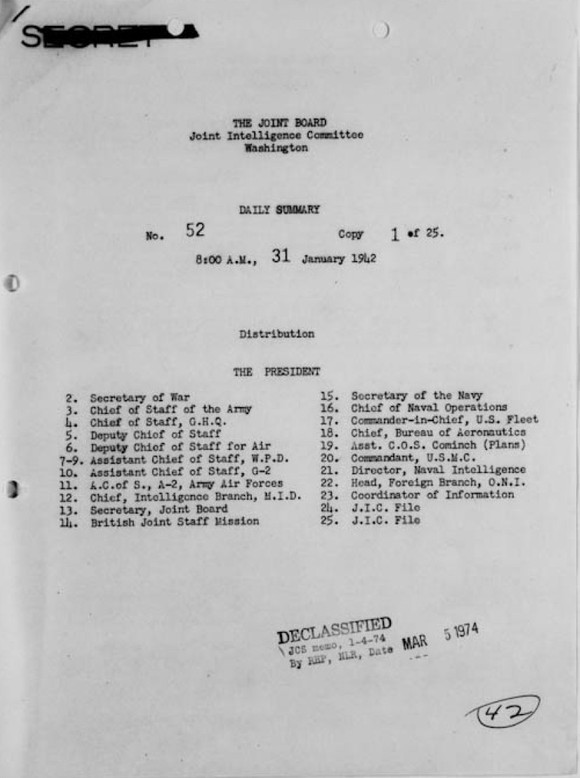
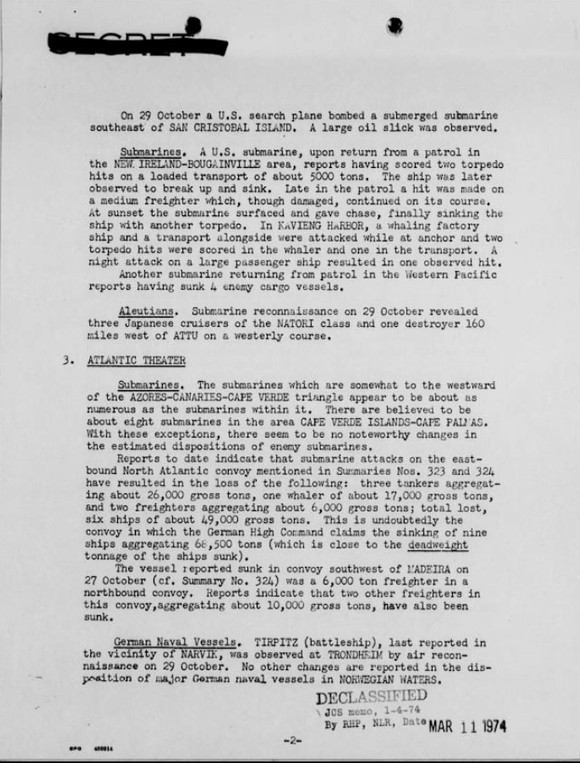
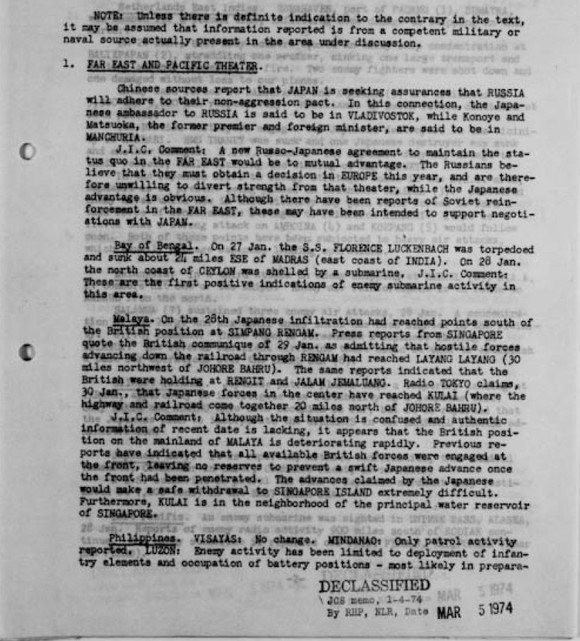
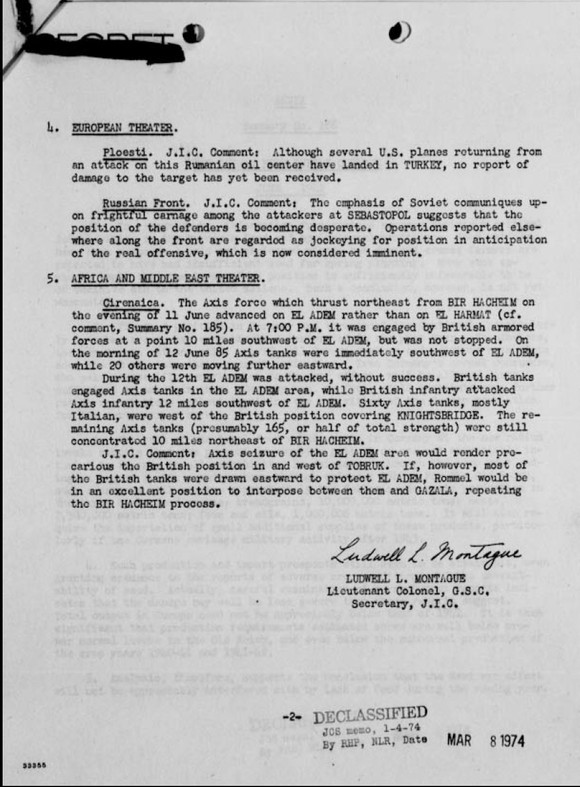

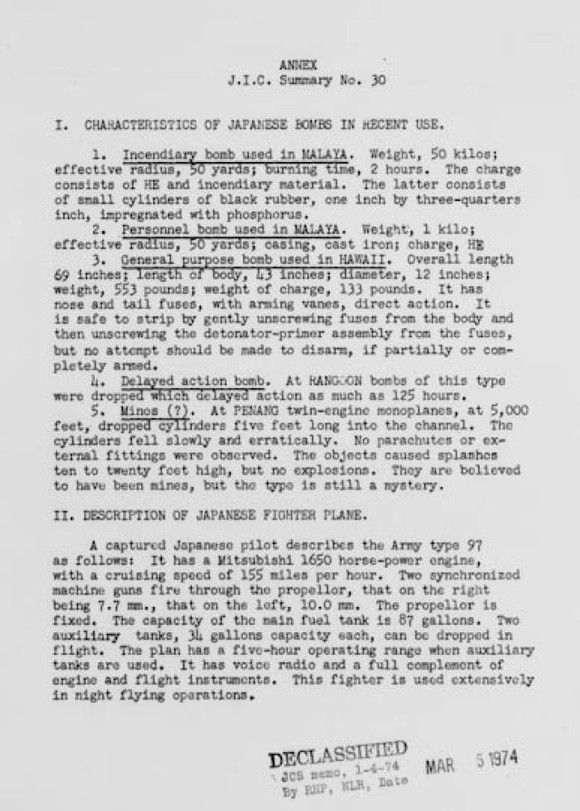
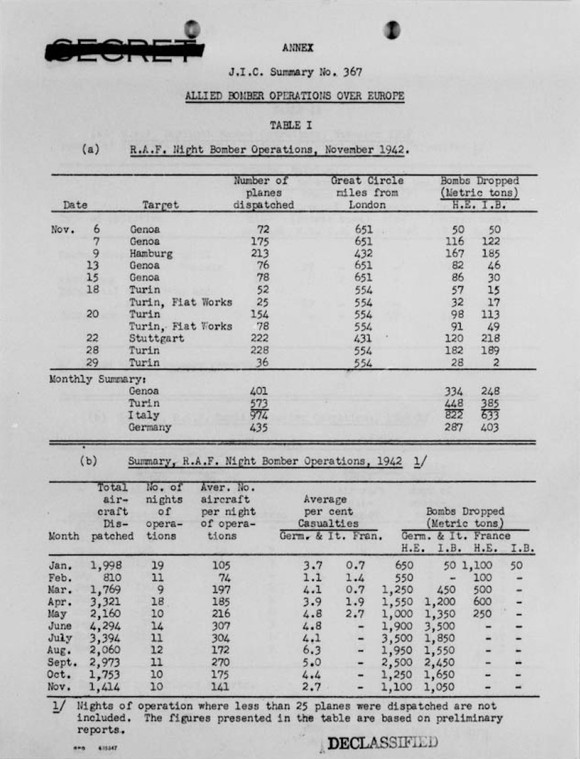
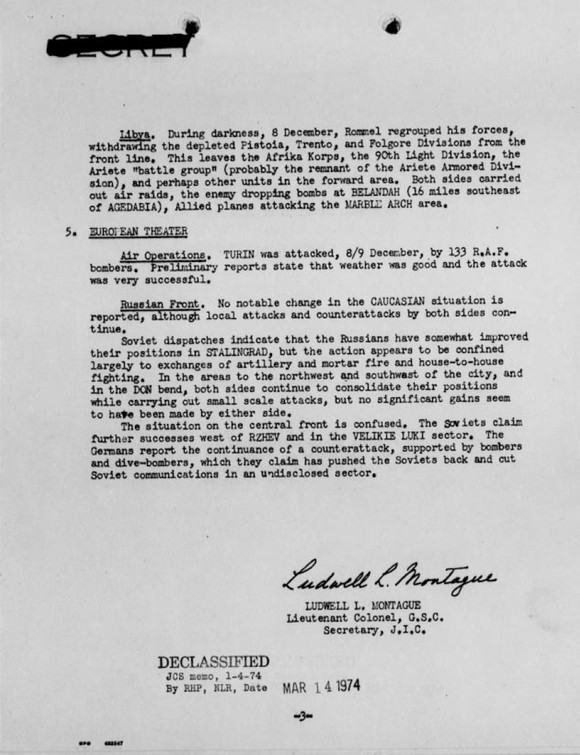

Related products
-
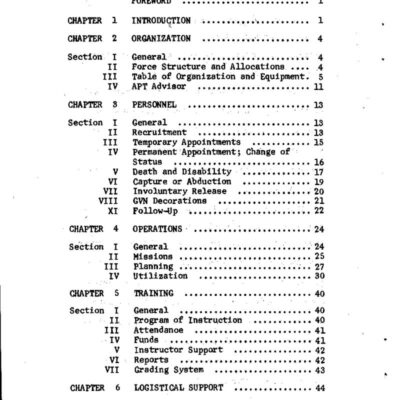
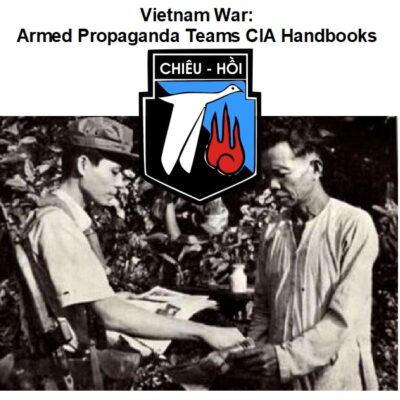
Vietnam War: Armed Propaganda Teams CIA Handbooks
$1.99 Add to Cart -

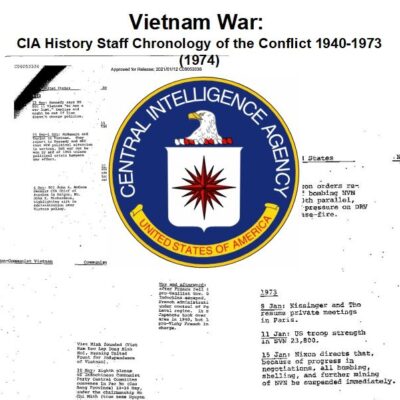
Vietnam War: CIA Chronology of the Conflict, 1940-1973 (1974)
$1.99 Add to Cart -
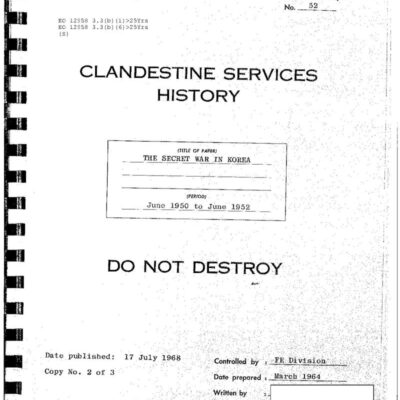
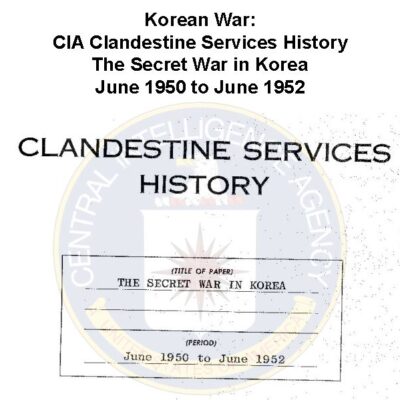
Korean War: CIA Covert Operations History – The Secret Conflict in Korea
$3.94 Add to Cart -
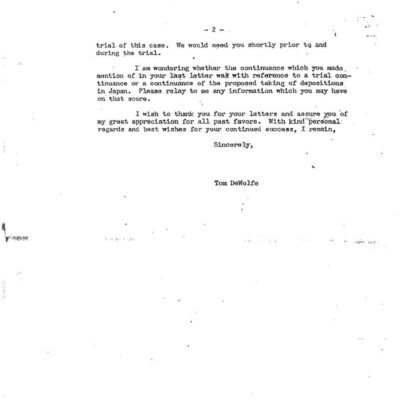
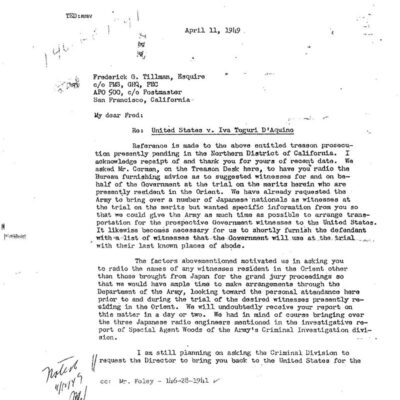
Tokyo Rose: Department of Justice Prosecution Files
$19.50 Add to Cart